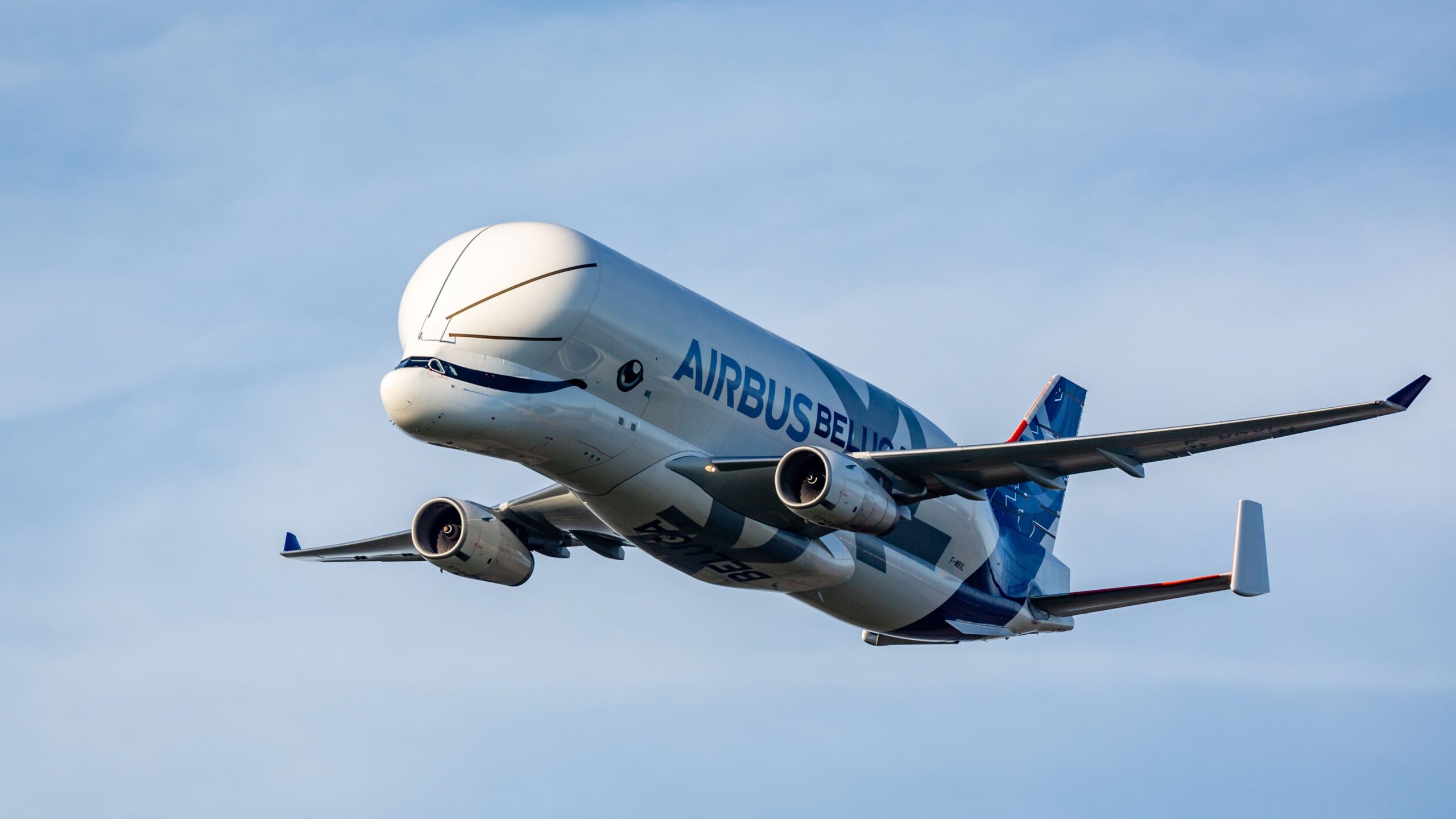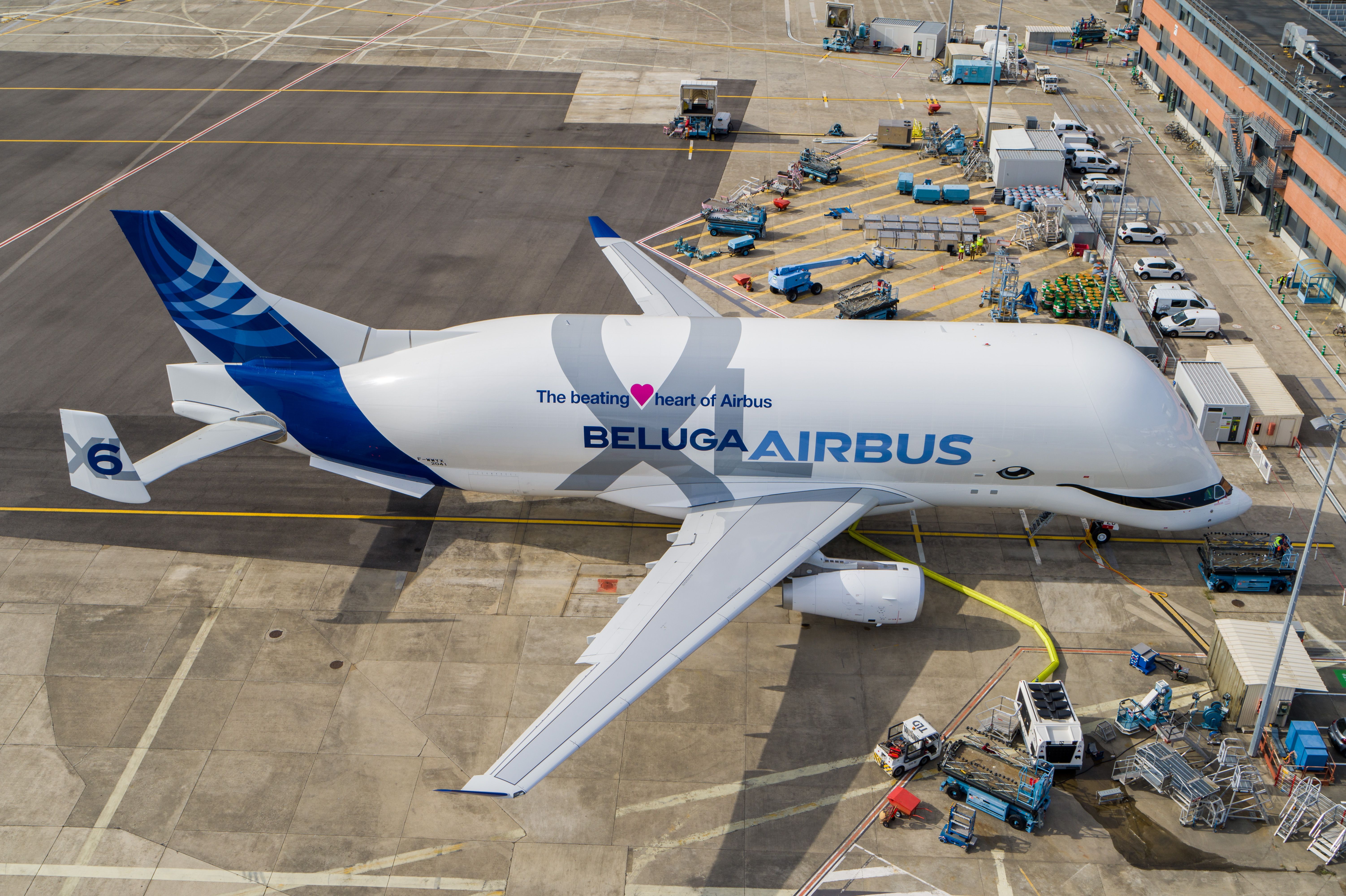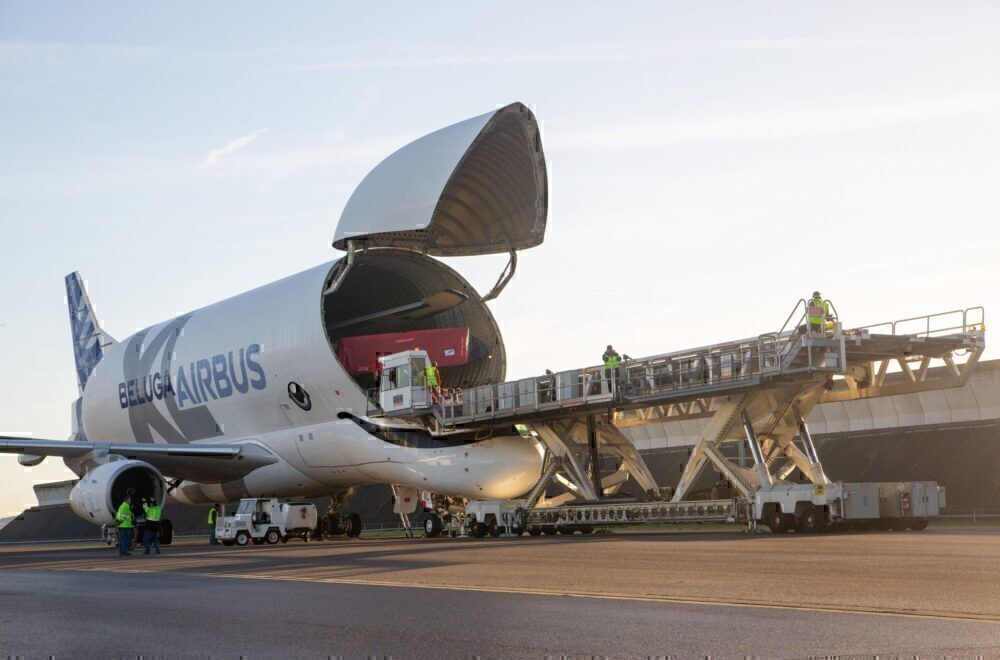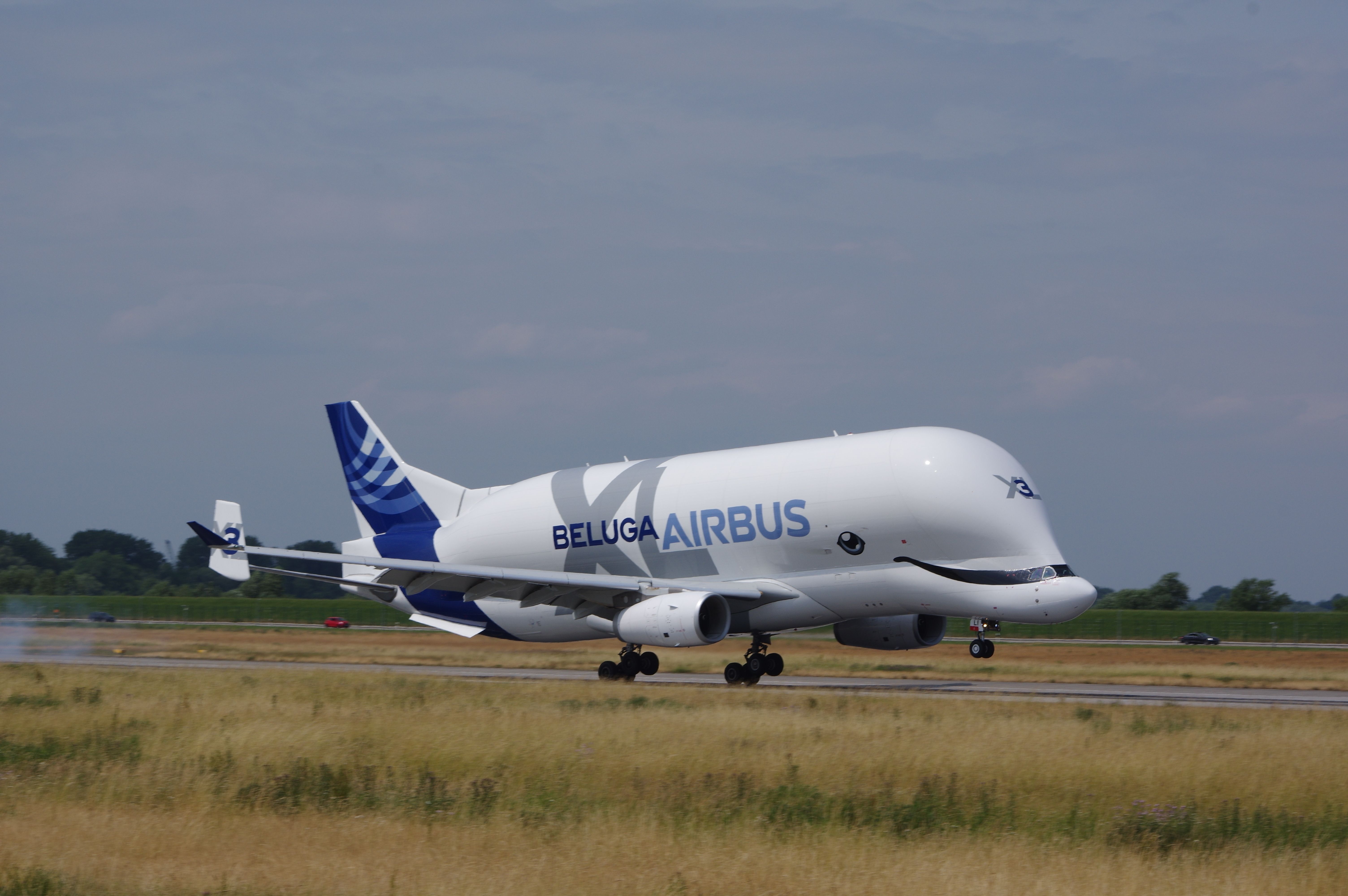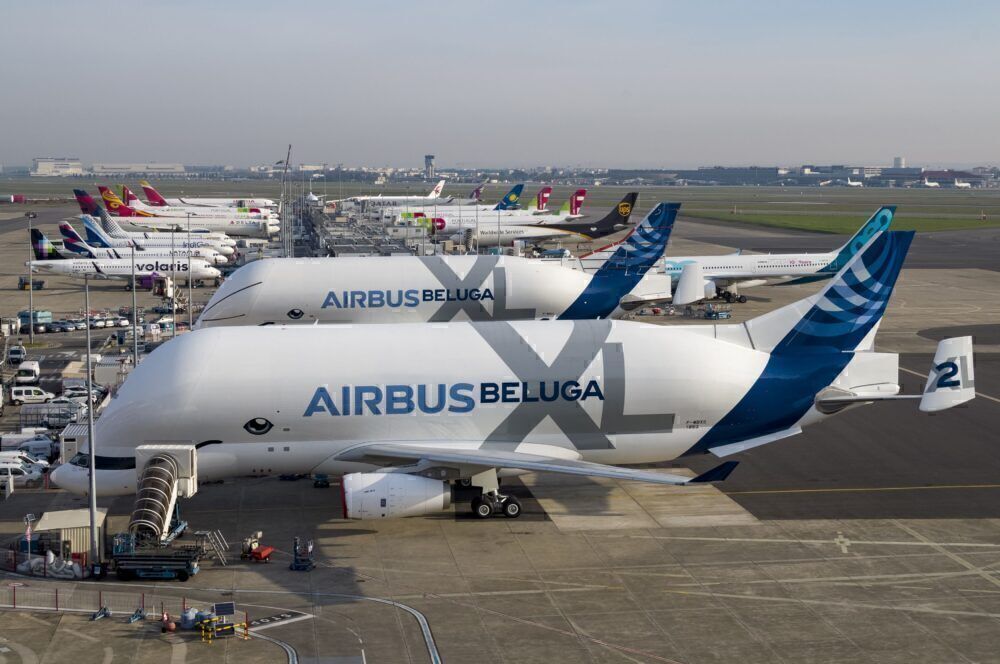The Airbus BelugaXL is the company’s super transporter built to transport very large aircraft components, such as wings and tail plane sections. With a cargo capacity of 78,000 cubic feet (2,209 cubic meters), the aircraft can easily fit the A350 wings. The BelugaXL was brought into service by Airbus Transport in January 2020.
With the Airbus A380 and the Boeing 747 already out of production, one may wonder if the BelugaXL has the potential to become the largest commercial airliner in operation. What would the seating capacity look like if Airbus did offer a passenger version of this giant whale?
Simple Flying shows a rough analysis to see how many seats can comfortably fit onboard the BelugaXL “commercial” aircraft.
Airbus BelugaXL
The design of the BelugaXL is based on the Airbus A330-200 airframe, allowing it to have a twin-engine widebody design. The aircraft is 207 ft (63.1 m) in length and 62 ft (18.9 m) high, with a fuselage diameter of 29 ft (8.8 m). The wingspan of 197 ft 10 in (60.3 m) is around the size of an A330-200. What makes it unique is the overall cargo volume, thanks to its mammoth fuselage cross-section.
| Design characteristics | Dimensions |
|---|---|
| Length | 207 ft (63.1 m) |
| Height | 62 ft (18.9 m) |
| Fuselage diameter | 29 ft (8.8 m) |
| Wingspan | 197 ft 10 in (60.3 m) |
| Wing area | 3,892 square ft (361.6 square meters) |
Photo: Airbus
The interior dimensions of the aircraft are more important in space than on the Airbus A380. With over 46 meters in length, 7.7 meters in width, and a height of 7.9 meters, there is plenty of room for a twin-deck design. A quick comparison with the A380 shows that the BelugaXL’s cabin width is nearly 16% greater than the A380.
| Aircraft Interiors | Airbus BelugaXL | Airbus A380 |
|---|---|---|
| Length | 46.6 m | 50.7 m |
| Width | 7.7 m | 6.5 m |
| Height | 7.9 m | 8.4 m |
Conceptual design
Since this article is intended to create a partial conceptual design, only an estimation of the number of passengers is done. Simple math on the cabin width shows that if a typical A380 can fit ten abreast seats across (in a 3-4-3 configuration), the BelugaXL can comfortably fit 12 seats. The 7.7 meters (303 in) can be utilized as follows:
- Aisle width (x2): 40 in
- Wall-panel clearances (x2): 8 in
- Space for seat structures (x3): 12 in
- Standard 18.5” economy seat (x13): 240.5 in
Photo: Airbus
We still have a couple of inches of spare with the above configuration. The only reasonable way to configure 13 abreast seats is 4-5-4. Is this overkill? Let’s give up one seat to create a third aisle. That may look like 3-3-3-3, similar to the typical A350/B787 configuration with an additional aisle.
If our seats have 32” of pitch, we can comfortably fit at least 52 economy rows lengthwise, leaving space for doors, galleys, and lavatories. We may lose some space for stairs on the lower deck, so having 50 rows of seats is a reasonable estimate for the lower deck. Doing the math we get,
- Upper deck: 52 rows x 12 seats: 624
- Lower deck: 50 rows x 12 seats: 600
- Total seats in an all-economy configuration: 1,224
An all-economy cabin can fit over 1,200 passengers in a twin-deck 12-abreast configuration.
Photo: M.J.J. de Vaan | Shutterstock
Care for a premium cabin?
The Found & Explained Blog shows that we can drop a few hundred economy seats to add a premium cabin, such as a Business Class, and a handful of First Class suites. Let’s substitute many premium seats on the lower deck to see how it looks.
First Class
- Total cross-sectional area for seats: 243 in
- Luxury 40” First class seat (x4: 160 in
- Seat structures and consoles (4): 80 in
- Seat pitch: 78 in
Business Class
- Total cross-sectional area for seats: 243 in
- Luxury 24” Business seat (x6): 144 in
- Seat structures and consoles (x6): 60 in
- Seat pitch: 78 in
Lower deck seating configuration
- First Class: 6 rows (1-1-1-1): 24 seats
- Business Class: 14 rows (1-2-2-1): 84 seats
Photo: Airbus
Putting it all together
Swapping the entire lower deck for premium seats, we found that approximately 20 rows could fit lengthwise, with a pitch of 78 inches. Depending on the customer’s requirements, adjusting seats will enable a beverage bar or a social space on the premium (lower) deck. A combination of First, Business, and Premium Economy seats can also be configured in the lower cabin.
The designed number of seats in a three-class configuration on the concept Airbus BelugaXL commercial airliner are as follows.
- First Class: 24 seats (Four abreast in 1-1-1-1)
- Business Class: 84 seats (Six abreast in 1-2-2-1)
- Economy Class: 624 seats (12 abreast in 3-3-3-3)
- Total seats: 732
Photo: Airbus
Without going into details of weights, power, performance, and certification, it is safe to estimate that a passenger version of an Airbus BelugaXL can accommodate 732 passengers in three classes and 1,224 in an all-economy configuration.
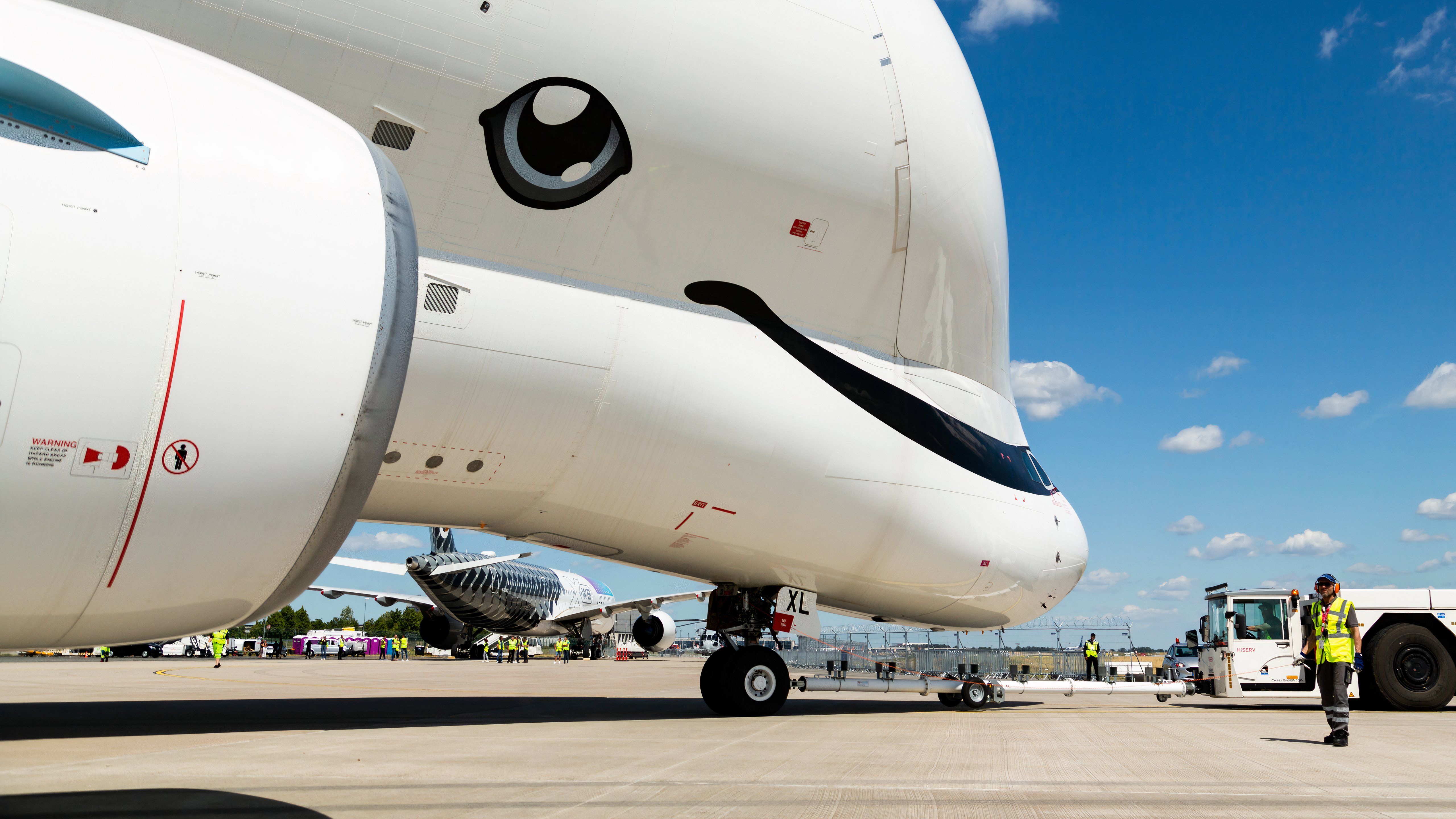
Related
Do You Like The Airbus BelugaXL Or Boeing Dreamlifter More?
The two largest aircraft manufacturers in the world each created a fleet of aircraft bigger than any planes they produce commercially. Since each production aircraft includes millions of parts assembled all over the world, Boeing and Airbus each needed an aircraft big enough to carry completed parts of another airplane and came up with clever ways to make it happen.
Airbus used to transport aircraft pieces in what was affectionately known as the Super Guppy, which was a modified Boeing Stratocruiser used to transport parts for the Airbus A300. This was followed by a modified A300s that comprised the original Belugas, which began arriving in 1995-1999. The airline’s current super transport fleet consists of six BelugaXL aircraft, which are based on the A330 and hold significantly more equipment than their predecessors.
Boeing’s Large Cargo Freighter, the Dreamlifter, took off in 2006 to support the construction of the 787 Dreamliner. The four aircraft are based on the Boeing 747-400

